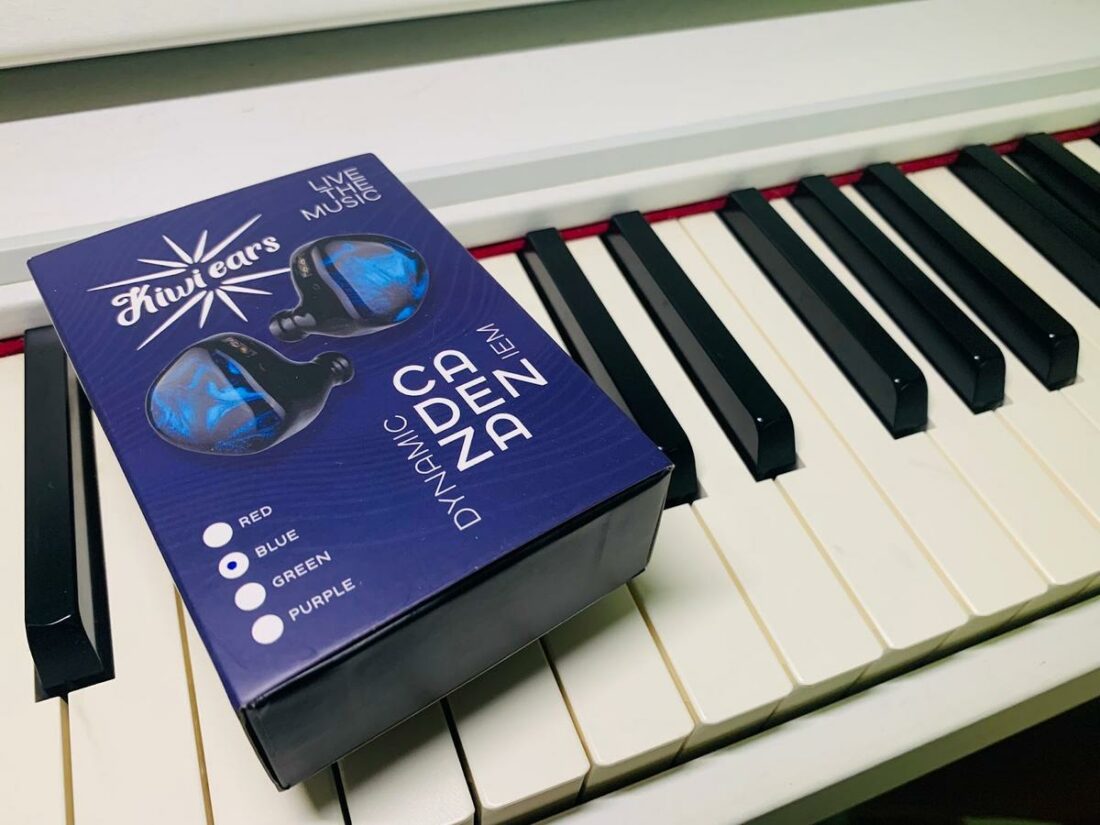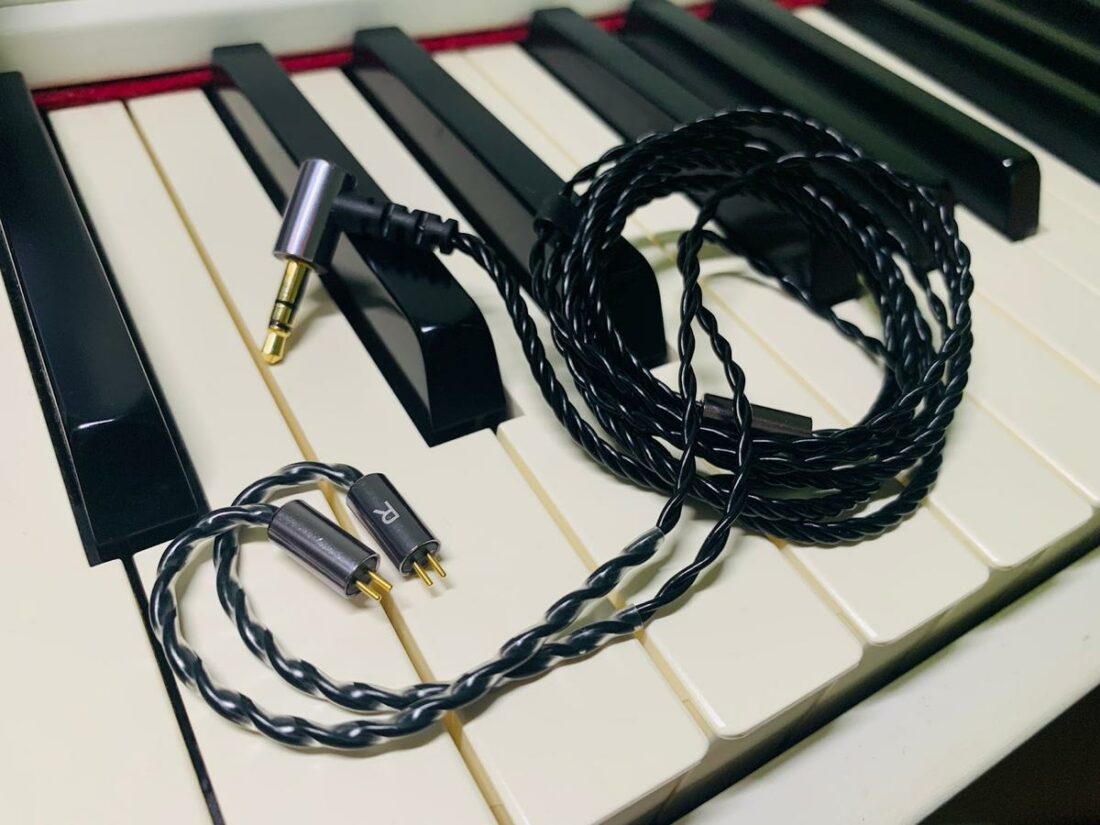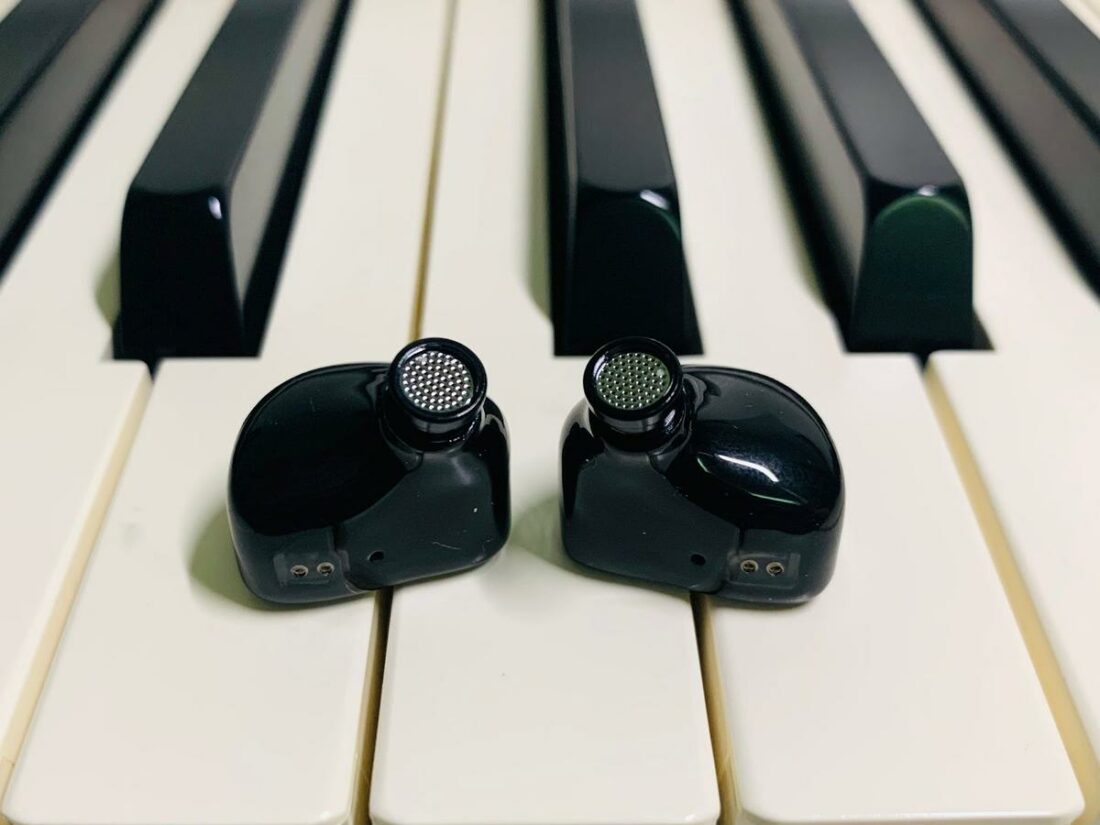The Cadenza eschew technicalities for an agreeable and pleasant tonality, with timbre being the star of the show.
The term “cadenza” (kəˈdɛnzə), as defined by the Merriam-Webster dictionary, refers to the following:
- A parenthetical flourish in an aria or other solo piece, commonly just before a final or important cadence.
- A technically brilliant, sometimes improvised solo passage, toward the close of a concerto.
- An exceptionally brilliant part of an artistic or literary work.
Talk about being put in the spotlight – the budget-priced Kiwi Ears Cadenza have a tough road ahead to live up to these virtuosic superlatives!
- Decent price-to-performance ratio
- Well accessorized
- Solid build, beautiful shells
- Ergonomic
- Relatively easy to drive
- Natural timbre
- Safe treble without sibilance or fatigue
- Lacking technical chops
- Overly safe tuning, lacking sparkle
- One-noted undefined bass, with mid-bass bleed
Read on to find out if they hit the ball out of the park with a performance for the ages! Hopefully, these new IEMs will not be forgotten after their fifteen minutes of fame.
Company Overview
Kiwi Ears is a relative newcomer to the ChiFI scene. Their inaugural release, the Orchestra IEMs, were very well-received.
Kiwi Ears’ IEMs are principally designed for musicians and studio work, and the company aims to capture fine nuances and details in the music. Kiwi Ear’s motto is to ‘never settle for second best.’ As a testament to this, each pair of their IEMs are individually hand-made.
Technical Specifications
- Form: IEMs
- Drivers: 1 x 10mm beryllium-plated dynamic driver
- Impedance (Ohm): 32Ω
- Sensitivity (dB): 110dB SPL/mW
- Frequency Response (Hz): 20Hz – 20kHz
- Removable Cable: Y
- Cable: 4-core braided copper cable
- Source Plug: 3.5mm TRS, single-ended
- Cup/Shell Plug: 0.78mm, 2-pin
Packaging

In the box
- Kiwi Ears Cadenza IEMs
- 3 pairs of narrow-bore silicone ear tips (S, M, L)
- 3 pairs of wide-bore silicone ear tips (S, M, L)
- 3 pairs of intermediate-bore silicone ear tips (S, M, L)
- Cable
For a set priced under USD$40, the accessories are nothing to be sniffed at. I’ve definitely seen pricier sets with far fewer goodies.
One is quite spoilt for choice with the three variants of silicone ear tips on offer.
The narrow-bore tips provide the most bass, though at the expense of compressing the soundstage. The wide-bore tips boost the higher frequencies and provide more air, with an expansion in the soundstage, while the intermediate-bore tips are a mid-point between the two tips mentioned above.

Do tip-roll to see what suits your preferences in terms of sound, comfort, and isolation.
Cable
The stock 4-core braided copper cable is relatively thin and tangly. Thankfully, it isn’t too microphonic, and an added chin cinch gives some stability during usage.
It uses a 2-pin connector, my preferred connector type. MMCX connectors may become loose with frequent cable swapping.

Unfortunately, a carrying case is not provided. There are cheaper ChiFI contenders that include a case in the packaging (e.g., Moondrop CHU), although I prefer stellar sound over premium accessories.
Design
The housings are very solid, fashioned from medical-grade resin. This kind of impeccable build is rarely seen at this budget price point.

Interestingly, there are no letterings on the shell to identify the sides, so consumers new to this hobby might face difficulties during usage. Nevertheless, experienced audiophiles should be able to identify the sides based on their alignment with respect to the ears.
Isolation is average, as the Cadenza are vented.
Comfort
3D-printed manufacturing was utilized for the Cadenza housing. The shells are very light and smooth without any weird protrusions. Ergonomics are top-notch. I had no discomfort whatsoever while putting the Cadenza through their paces.

I did not find any driver flex on my set. However, this partially depends on ear anatomy and the type of tips used.
Internals
The Cadenza use 10mm, beryllium-plated dynamic drivers. Beryllium was all the rage just a couple of years back, but this material has been somewhat overshadowed and tamed by the current planar driver craze.
Let’s read on to determine if these beryllium drivers are the bee’s knees or just a marketing gimmick.
Kiwi Ears Cadenza Sound
The Cadenza are relatively easy to drive from weaker sources. Amplification may slightly improve dynamics and provide a tighter bass.

The Cadenza sport a warm Harman-like tuning.
This sonic signature is very consumer-friendly, with nothing too unpleasant or jarring.
Timbral accuracy is very natural, and timbre-freaks will appreciate this aspect. Strings, brass, percussion, and woodwinds all sound incredibly authentic; the Cadenza shine with music genres incorporating acoustic instruments, such as jazz and classical.
Unfortunately, the satisfying tonality and timbre are marred by disappointing technicalities. Indeed, the Cadenza lose out to cheaper rivals in this department.
Soundstaging is intimate in all three dimensions. Micro-detailing, imaging, and layering are below average, and note edges are blunted, with transients occurring at a leisurely pace. Instrument separation is sub-par, and coupled with the compact soundstage, music smears into a nebulous blob when fast or complex tracks come out to play.

Bass
Bass is north of neutral but not at legit basshead levels. The lower frequencies are mostly focused in the mid-bass, with a tickle of sub-bass extension heard.
In terms of quality, the bass lies on the slower side, and there’s mid-bass bleed in spades. Smearing of bass lines is sadly noted, and the bass comes across as one-noted and undefined, with a distinct lack of texturing.
Back to our question of whether the beryllium DD is more of a marketing ploy or sonic improvement: I won’t mince words here – the truth lies with the former!
Midrange
The midrange is slightly recessed. The aforementioned mid-bass bleed warms the lower mids a lot, impinging on transparency.
The upper mids are forwards without veering to shoutiness, which is a tough line to balance. Vocals are natural but may take a seat or two behind the music, given the tuning choices.
Treble
The upper treble rolls off early, and while I won’t call the Cadenza a dark set, there’s not a lot of air and sparkle, so resolution and clarity are not class-leading.
The Cadenza is not for treble-heads, but on the flip side, the treble is smooth, with minimal instances of sibilance. Coupled with the good fit, the Cadenza are a pair of IEMs that can be used for long sessions to chill to music.
Comparisons
I compared the Cadenza against other ultra-budget single DDs. Planars, multi-BAs, hybrids, and other driver types were left out due to the different transducers having their own pros and cons.

Vs. 7Hz Salnotes Zero
The Salnotes Zero are a neutral bright pair of IEMs. They sound more sterile and analytical, with a thinner note weight. The Zero are harsher and more sibilant, resulting in a more fatiguing experience.
The Zero have less bass quantity, but the quality is better, with a faster and cleaner bass. Edge definition, layering, imaging, micro-detailing, and transients are easily won by the Zero, with the Zero being much more technically adroit.
Timbre is slightly less natural on the Zero, and the Zero may be more uncomfortable due to perpendicular edges in the shells. The Cadenza, in contrast, have better timbral accuracy and fit very well.
Vs. HZSound Heart Mirror
The Heart Mirror are tuned neutral bright. They have a linear bass, with less quantity but much better speed and texturing, with no mid-bass bleed. The Heart Mirror have greater treble extension, though they can be fatiguing and sibilant.
Note weight is thinner on the Heart Mirror, and the timbre is less natural. The Heart Mirror are a league or two ahead in technicalities, with superior instrument separation, micro-details, clarity, and imaging. Soundstage is similarly intimate on both pairs of IEMs.
The Heart Mirror come in a mirror-like finish and are better accessorized.
Vs. Tangzu Audio Wan’er
The Wan’er are a warm neutral set. They have slightly less bass than the Cadenza and boast a tamer treble.
Timbre is also very natural on the Wan’er. Additionally, the Wan’er have slightly better soundstage, edge definition, micro-details, imaging, and instrument separation.
The Wan’er come in an alluring package and provide a good fit. Retailing at almost half the price of the Cadenza, the Wan’er have arguably better price-to-performance.
Where to Buy
Conclusion
The Cadenza are not a bad set by any means. In fact, they bring a very pleasant and fatigue-free tuning to the budget ChiFI buffet table. Timbre is also extremely organic, and folks who predominantly listen to genres with acoustic instruments will have a field day.
The packaging includes a generous array of ear tips, and the IEMs are elegant and comfortable. They are relatively easy to drive and have quite a decent price-to-performance ratio at their affordable price tag.

The question to be answered then: “Do they live up to their namesake of Cadenza, in being a technically gifted virtuoso?”
While the concert doesn’t totally fall flat – with the pianist successfully reaching the end of the recital – there may be some murmurs of discontentment among the audience. Some wrong notes are hit during the busiest passages, where the soloist should have fluidly shined and showed technical prowess!
The Cadenza are a one-trick pony, acing tonality and timbre at the expense of technical performance.
Their limitations are seen in the untextured, bleeding, and slow mid-bass, with poor imaging, micro-detailing, instrument separation, and an intimate soundstage. The Cadenza do decently well for slower tracks, but disappointingly, the music sounds indistinct and fuzzy with more complex music.
It might sound that I am being overly harsh on an ultra-budget set. However, even when compared to cheaper IEMs around the USD$20 bracket, the Cadenza take a beating in technical performance and lose marks in my book. The lack of sparkle and air might also force treble-heads to look elsewhere.
Nevertheless, the Cadenza do more things right than wrong and deserve a soft recommendation, especially if one is looking for something natural sounding – a transducer to chill to – with a fatigue-free experience for long listening sessions. Otherwise, the Cadenza are not my first suggestion for those searching for a dextrous technical beast.

Man, that was tough – so many contradictions. The reader will however conclude your preference to a more unnaturally bright , less organic and rather intense listen. Sadly, too many reviewers confuse better technicalities with over emphasized treble. And then we learn you were hoping for a “dextrous technical beast”….eh what? NO ONE would be looking for that in the Cadenza.
as a person who had salnotes and now cadenza, I disagree with a lot of information here about the latter’s soundstage, separation, imaging and bass response. It is much better, wider than whats retold here.